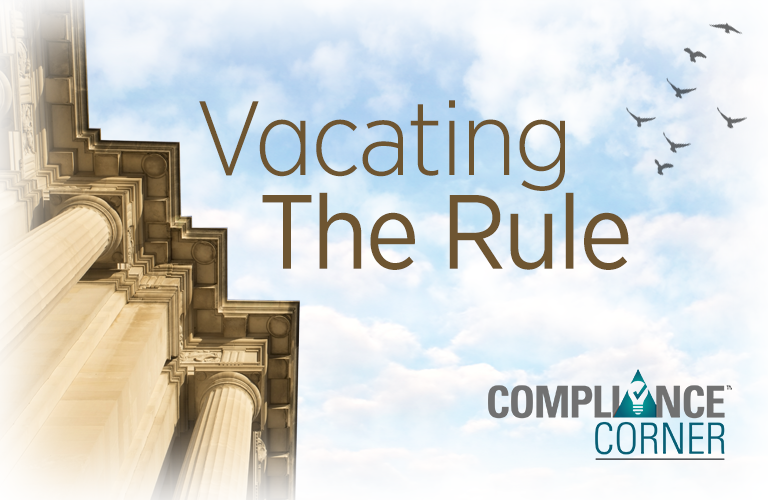This month’s Compliance Corner entry will be my last article that discusses the DOL fiduciary rule (applause).
We’ve all seen or heard the stories over the past week that the 5th Circuit Court of Appeals finally issued a mandate that essentially killed the rule. The court had made the decision back in March to vacate the rule, but the issuance of the mandate was the last step that was needed to put that final nail in the coffin. All appeals have been exhausted and all last-ditch efforts to keep the rule alive have failed.
The rule is no more.
What does this mean now? What’s next? Do we just go back to the way things were and act like nothing happened? These are the types questions to really consider.
Anyone who has been involved in our industry knows that rules and regulations certainly serve a critical purpose and that’s to protect the interests of customers first. However, we also know that rules and regulations are like weeds. You might be successful at pulling or eliminating one, but two more are waiting to pop up.
Keep in mind, there are many individuals employed in government whose sole responsibilities are to create rules and regulations! While the DOL’s fiduciary rule is gone, there are others in the wings waiting to come forward. We’re already beginning to see this now.
The SEC has already introduced their version of the fiduciary rule, known as ‘Regulation Best Interest’, and it’s currently open for comment. However, there are vast changes that are required, and the SEC fully acknowledges this fact. Several states have explored creating their own versions of a fiduciary rule, which would certainly complicate our industry with differing standards.
The NAIC has also started the process of creating its own model regulation, which would require adoption by the various states. As you can see, the DOL rule may be gone, but perhaps something far more complex awaits us!
What if we have several standards we must live by? Which rule would win out? How do we deal with the convergence of these various rules that are designed to cover the same thing? Our sigh of relief for the fiduciary rule may just be a deep breath before we take a plunge!
What to Do Now?
Unfortunately, most of the new proposed rules are in a “wait and see” mode where we don’t have specific clarity on what we’ll need to do or change. Once review and comment periods are finished for the rule, there are amendments that take place and usually more comments are collected. We may be in this holding period for some time, but we will keep you abreast of the changing taking place on the regulatory front.
Are We Business as Usual (Pre-Fiduciary Rule)?
Most insurance companies have told financial professionals that their obligations to collect the PTE 84-24 disclosures are over. This makes sense as the fiduciary rule is invalid, so PTE 84-24 is irrelevant. One of the beauties of the rule was the required disclosures provided to customers.
Disclosures not only protect the customer in terms of giving them vital information to make an informed decision, but they also protect the financial professional from a future situation where a customer complains and says, “Hey, you never told me about that!”.
If you’ve properly documented and disclosed things to a customer, this is your best defense to also cover you in the future. While it’s no longer a requirement (for the time being), you should consider providing disclosures to your customers anyway.
What’s the harm in providing your customers with all the information you can possibly equip them with to make an informed decision? I can’t think of any good reasons to withhold disclosures from a customer, but if you think of some, please reach out to me for a very healthy debate (wink).
In my opinion, if you’re afraid of disclosing something to a customer, you’re essentially hiding something purposefully that may have otherwise changed a customer’s mind.
While we have a little reprieve from a complex fiduciary rule, the future is very unclear in what awaits us next. We can all agree that acting in a customer’s best interests is always the right thing to do. This concept is never going away, and someone will have a rule that will stick.
Our challenge for the near future will be to figure out who’s going to ultimately articulate how that looks in our day-to-day businesses.

